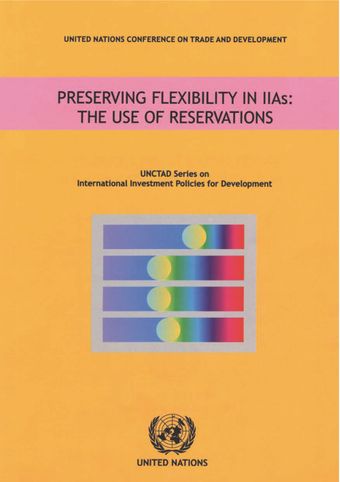- Home
- Books
- Preserving Flexibility in IIAs
- Chapter
Concluding remarks

- Author: United Nations Conference on Trade and Development
- Main Title: Preserving Flexibility in IIAs , pp 69-71
- Publication Date: October 2006
- DOI: https://doi.org/10.18356/03f3b3f2-en
- Language: English
It is the very nature of IIAs to constrain the policy options available at the national level. Despite such constraints, host country governments in developed and developing countries alike have entered into an ever-increasing number of IIAs at the bilateral, regional and interregional levels. To a considerable degree, they have done so because they view IIAs as useful tools for enhancing domestic investment climates, for locking-in recently enacted (and typically liberalizing) policy reforms and for signalling the future direction of their investment policies. While legally binding obligations can indeed prove beneficial for consolidating ongoing reform efforts and for increasing the transparency and predictability of national investment regimes, IIAs have long recognized, in various forms, the need of host countries to preserve flexibility for putting in place national development policies.
© United Nations
ISBN (PDF):
9789211555462
Book DOI:
https://doi.org/10.18356/4c7d3325-en
Related Subject(s):
Economic and Social Development
Sustainable Development Goals:
-
From This Site
/content/books/9789211555462c007dcterms_title,dcterms_subject,pub_keyword-contentType:Journal -contentType:Contributor -contentType:Concept -contentType:Institution105
/content/books/9789211555462c007
dcterms_title,dcterms_subject,pub_keyword
-contentType:Journal -contentType:Contributor -contentType:Concept -contentType:Institution
10
5

